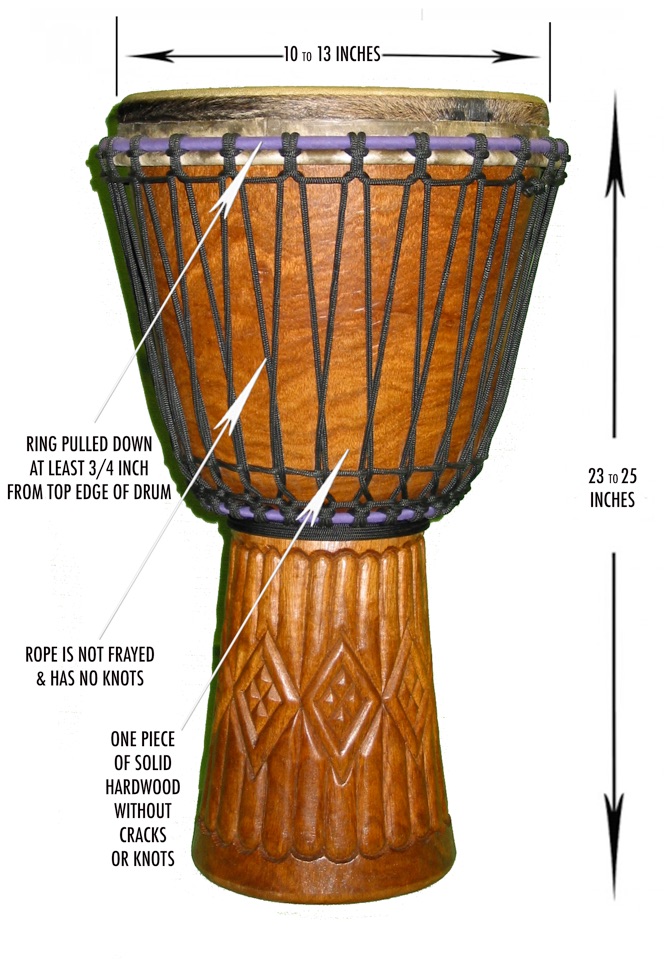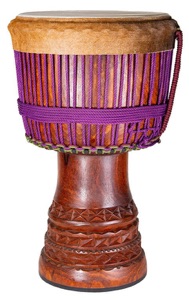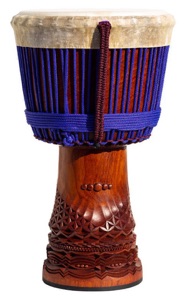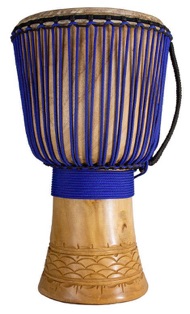How to Pick a Good Drum!


Where else to buy a good drum?
It is always best to be able to visually and sonically inspect a drum before purchasing it. If I or local stores don’t have what you want, however, there are a few online stores that I have experience with and trust to provide a good to excellent quality product. As with most things, one gets what one pays for. As is the case with all musical instrument, there is a huge range in sound quality!! Trust me, you don’t want a ‘student-quality’ drum! With quality instruction, one can outgrow a poor quality drum in a couple of days and forever be limited in the sounds one can make!!!
It is very rare to find a decent quality jembe for less than $300. Good quality jembes usually range from around $400 to $500. A high quality jembe can run you from around $550 to $1700. The highest prices result from elaborate decorative carvings.
My go-to source for excellent quality drums is Koma Drum.
Not only are their drums superior, Tom at Koma Drum has been working tirelessly to make very positive changes to the industry, paying the West African artisans fairly!!! In fact, Koma Drum’s carvers are payed the highest wages in the industry and have the best working conditions!
If, for some reason, I or Koma Drum can’t provide you with what you need, check out Wula Drum & Drumskull Drums. Drumskull provides more constantly high quality workmanship but at considerably higher prices. Both places, however, have been known to wheel and deal with the folks in West Africa in unethical ways.
Each student needs to have a drum to participate in one of my classes! A Jembe / Djembe is best, (as that is the drum on which the music I teach was intended to be played), but you could also use an ashiko or a conga drum. I provide the dununba, sangban, and kenkeni drums, as well as bells.
-
1-Your drum should be at least 23 inches tall. This will allow for the drum to sit on the ground -and comfortably played while sitting in the average chair.
-
2-Your drum should have a head diameter of at least 10 inches.
-
3-The top ring should be pulled down at least 3/4 of an inch from the playing surface. If it is too high, you will hit it when you play - not ideal!
-
4-For the best sound, it should be carved out of a solid piece of hardwood. Plastic or composite drum shells almost never sound good!
-
5-There should be no cracks or knots in the wood.
-
6-The head / skin should be natural goat or calf skin that has not been planed with no tears / holes. Synthetic heads offer some advantages, like being waterproof and lasting longer, but they almost never sound good!
-
7-The rope should be at least 4mm thick, not frayed and with only 1 knot per long length.
-
8-The inside of a well made drum will be fairly smooth. A regular texture from the carver’s chisel is fine. If you would hesitate to run your hand along the inside wall for fear of cuts or big splinters, the drum was badly carved and the sound will suffer!



Koma Drum Melina Jembe
-
•Wood Type: Melina
-
•Diameter: 13 1/2"
-
•Height: 24"
-
•Weight: 17 lbs
-
•$450
Koma Drum MKS Special Piece
-
•Wood type: Lenke
-
•Diameter: 13.5"
-
•Height: 24.5"
-
•Weight: 23 lbs
-
•Rubber Bottom
-
•$1400
-
•Koma Drum Jembe
-
•Wood Type: Hare' (balafon)
-
•Diameter: 14 1/8"
-
•Height: 25"
-
•Weight: 21 lbs 13 oz
-
•Rubber Bottom
-
•$1000
Drum Samples